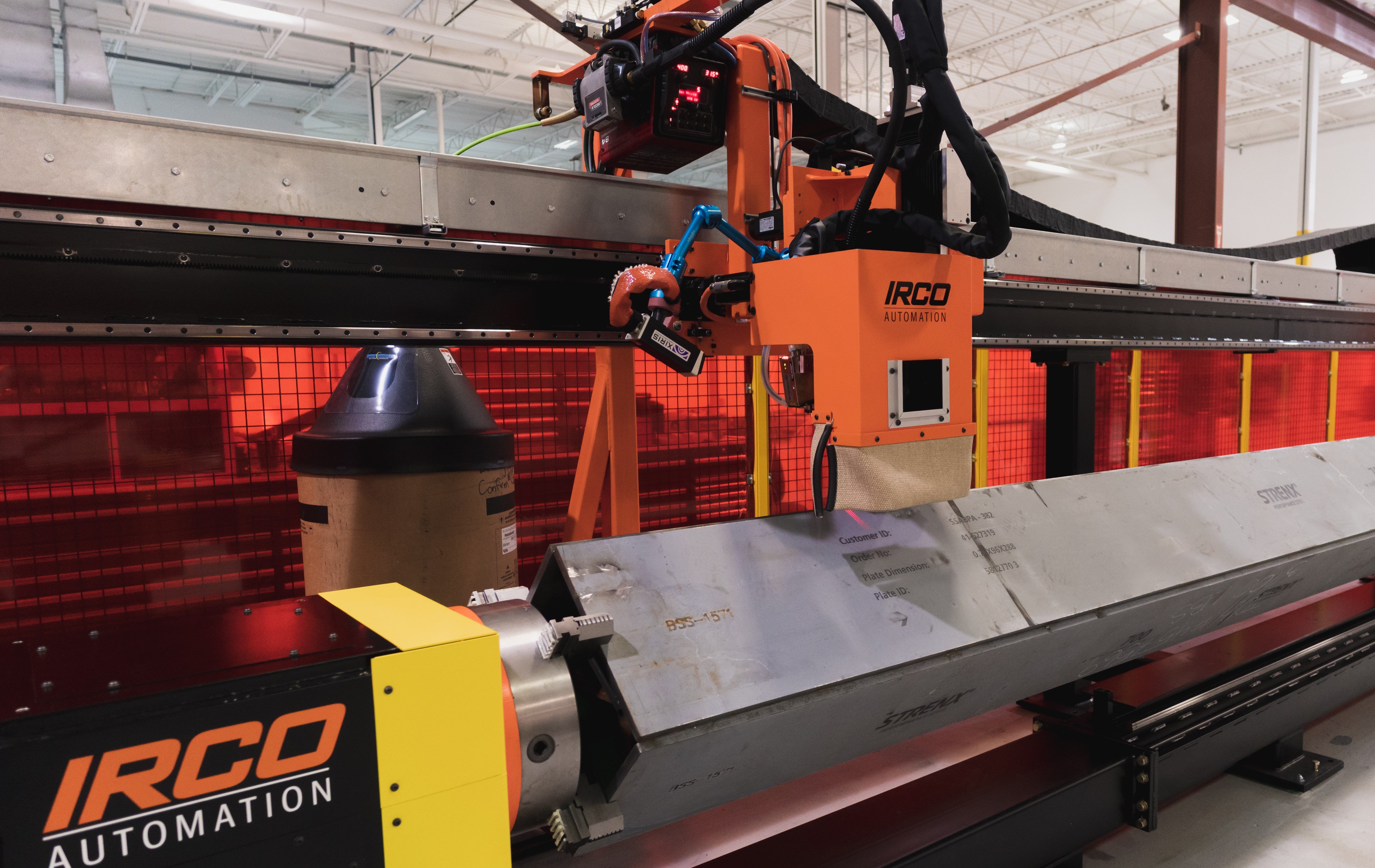New developments in electronics and sensor technology offer fabricators the ability to use specially designed Weld Cameras to monitor the Pipe or Pressure Vessel Cladding process with better clarity than ever before. A better quality image of the cladding process can provide numerous productivity, quality, and health and safety benefits to the Fabricator.

A Xiris Weld Camera Configured to Monitor a Pipe Cladding Process (Courtesy LJ Automation Ltd.)
While there are many applications where a Weld Camera is an important component of an automated welding process, Pipe or Pressure Vessel Cladding stands out as an application where a Weld Camera is essential. Often performed in difficult or dangerous working conditions, the cladding process greatly benefits from an operator being able to remotely monitor the process using a Weld Camera. The environment of the cladding process is often complicated by restricted operating sizes (such as small diameter pipe or pressure vessels), elevated working temperatures (that could reach as high as 700°F) and the need to not only see the definition of the welding arc, but also the detail, position and quality of the weld bead that is generated during the cladding process.
By using a Weld Camera that is equipped with High Dynamic Range capability, the operator can improve the time to setup the welding equipment because adjustments to the welding process can be done while the camera is live. In the same manner, troubleshooting of the weld process can be done faster as small tweaks in welding parameters can be monitored immediately using a camera.
In certain high value Pressure Vessel applications where precise cladding is essential (e.g. power generation), the ability to record video of the welding process using a Weld Camera helps the fabricator to perform a quality audit and review of their processes
In some inner diameter pipe cladding applications, a Weld Camera is the only way to see the function of the components of the weld process, namely the Weld Tip condition and position relative to the seam, the previous clad layer, the spacing between solidification waves, shielding gas, filler wire and other parameters. Being able to see all these parameters provides the main benefit of using a Weld Camera: as an early indicator of defects in the welding process that would not be visible to the operator otherwise.

A Welded Bead Viewed from a Xiris Weld Camera
Conclusion
Using a Weld Camera for Pipe Cladding applications provides fabricators a faster way to setup and troubleshoot their cladding process, as well as maximizes the arc “On-Time” during welding and provides the ability to adjust the weld parameters “on the fly”. With the ability to record video, the welding operators can also monitor the recorded video of the cladding process offline for quality audits.
For more information on how Xiris Weld Cameras can help monitor your weld processes, visit Xiris.com
Sign up to receive our Weld Video of the Month



.png)


